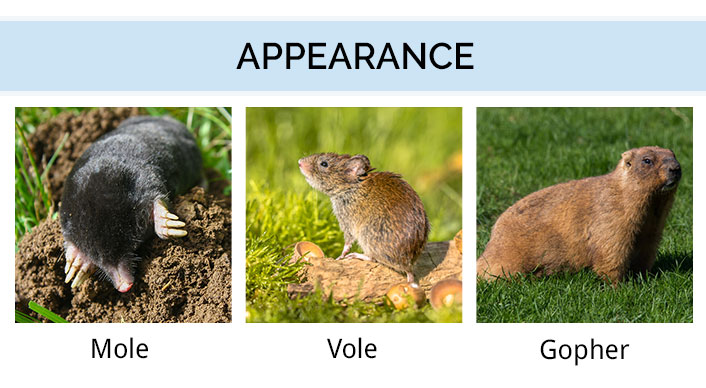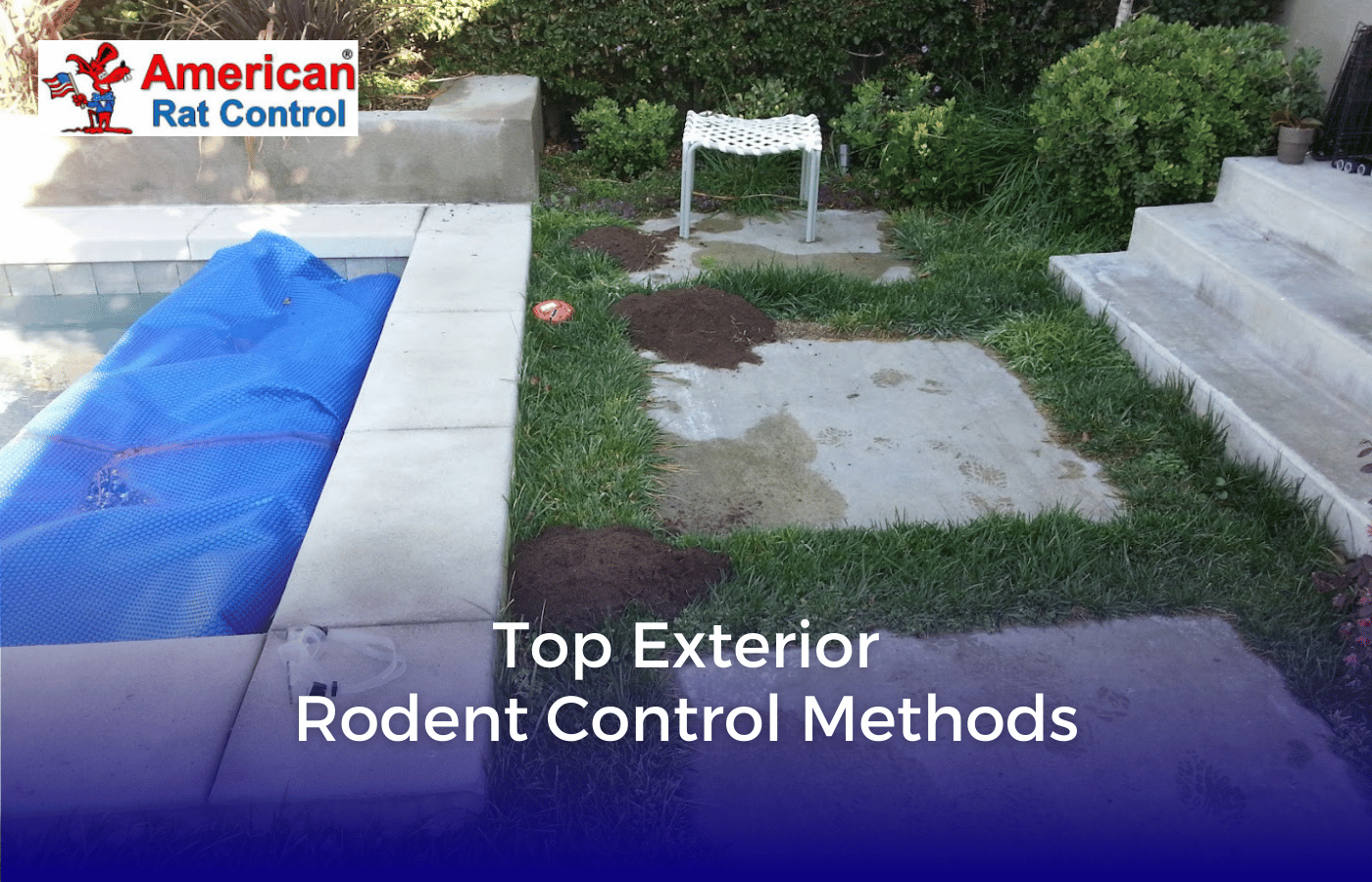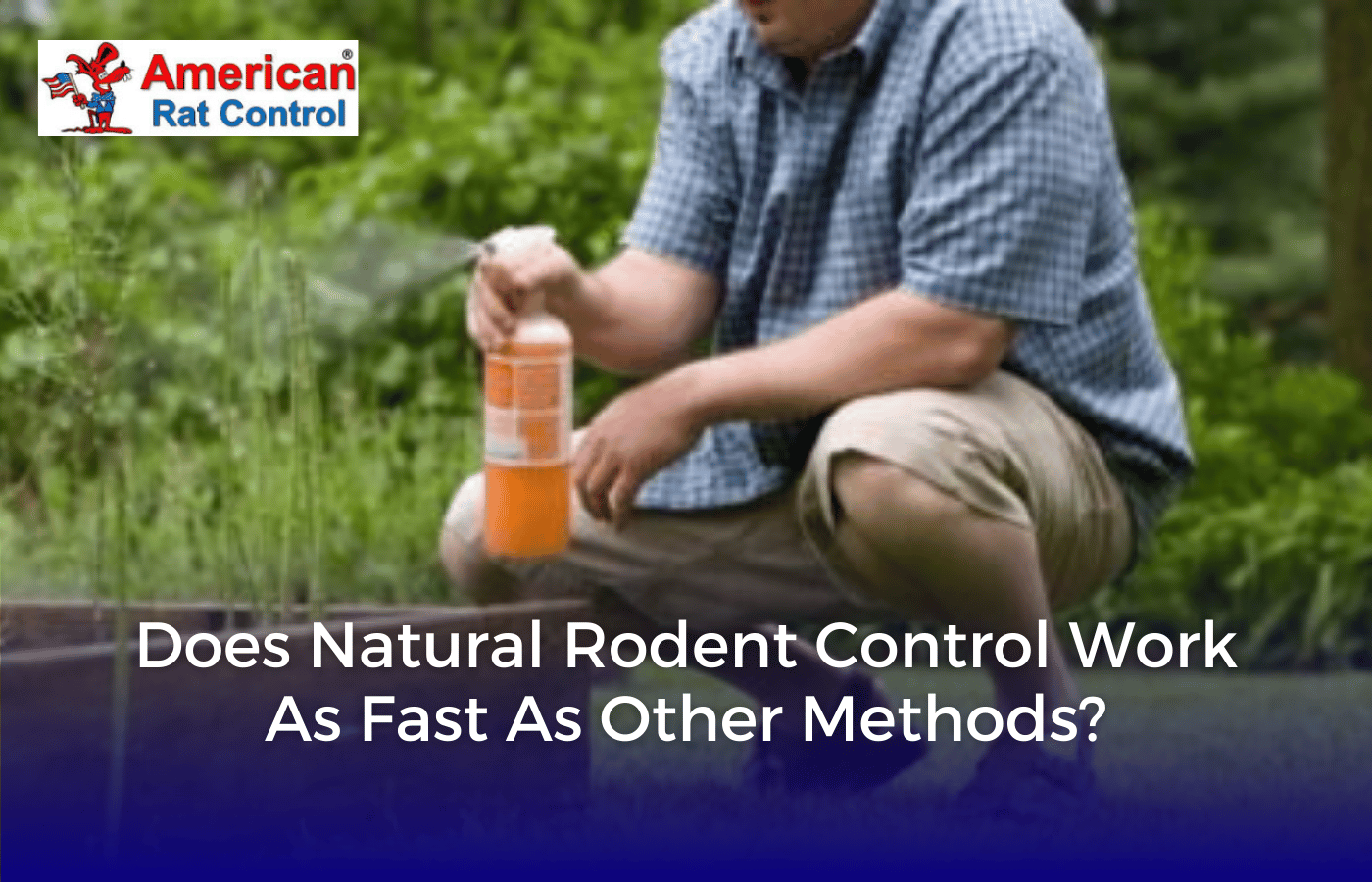Moles, voles and gophers are all small burrowing rodents capable of doing great damage to your lawn, garden, trees and underground wiring and fixtures. This is especially true if the pests have invaded the ground underneath your home. Here, damage may go undetected until very expensive repairs are required.
This is just one reason to have a thorough inspection of your home for any signs of rodent pest invasion at least once a year. A comprehensive inspection of your premises for signs of rodent infestation is just one of the many services we offer our customers here at American Rat Control.
Moles, Voles and Gophers: Disease Transmission
Although shy creatures living almost their entire lives underground, gophers, voles and moles can and will bite both pets and humans if cornered or threatened. Bites can spread disease and become infected.
Curious cats and sometimes dogs will stick their paws into these rodents’ holes and become bitten that way. All three species can spread pathogens, such as leptospirosis, hanta virus and even bubonic plague. All are serious diseases that can result in death if not treated promptly. Hanta virus has no specific treatment, only supportive care.
Survivors of the disease may be left with permanent kidney damage. The virus is excreted in the animals’ urine and is spread by inhalation of virus-laden dust in enclosed spaces. It may also be transmitted by touching a contaminated surface and then touching the eyes, mouth or nose.
Pest Rodents and Rabies
Rabies, a lethal viral disease of the nervous system virtually 100 percent fatal if not treated well before the first symptoms appear, is much more commonly seen in vector carrier animals. These include foxes, skunks, coyotes, bats and raccoons. Rodents of all types, including voles, moles, gophers and rabbits rarely carry rabies.
The major reason for the first three is because the animals remain underground and don’t have much contact with other animals, including predators. Rabbits are prey animals but if attacked, a rabbit is extremely unlikely to survive long enough to transmit the disease.
That said, any mammal can carry and transmit the rabies virus. Birds, although warm-blooded, are not mammals and do not carry rabies. One possible exception to the rabies mammal rule is the opossum. Although mammals, possums have relatively low body temperatures. This may make them resistant to the rabies virus. Like most viruses, rabies requires highly specific conditions to thrive.
Like any animal bite, bites from rodents can become seriously infected.
How to Tell the Difference Between Moles, Voles and Gophers
Just one look at your messy landscape is enough to tell you that you have unwelcome subterranean rodent guests. However, eliminating these animals is different for each case. It takes a rodent pest removal expert to identify which animals are causing the problem and applying the correct technique to get rid of them. At American Rat Control, our expert technicians understand the behavior of each species and how to quickly remove them.
Traps, baits and gasses are common methods used to restore and preserve the beauty of your home’s landscape.
Gophers
Gophers are the largest of the three species and typically cause more damage. They’re about four to twelve inches long and have a face much like a hamster. Unlike the pet rodent, gophers have long hairless tails. Their cheeks are large and contain pockets that the rodents stuff with food and nesting material.
Gopher mounds are distinctive. The animals push up the soil in mounds around a hole. These mounds are often about 1 foot in height, fan or horseshoe-shaped and one to two feet in diameter. Underground tunnels may be anywhere from six inches to six feet underground and do not leave runways visible from the surface.
In contrast, both moles and voles may leave spongy, raised areas following along the tunnels underneath. Not only does this damage your lawn and gardens, but is unsightly and imay also pose a safety risk for you, your family and guests if they step in a gopher hole or trip over a mound.
Gophers and voles are both herbivores; moles are carnivores and prefer grubs and other insects to eat. Gophers and voles eat plants from underneath and can destroy gardens, crop fields and even orchards when they chew on trees’ roots from under the ground.
The flowers and crops may appear normal aboveground, and damage is only discovered when the plants begin to wither and die from root damage.
Gophers are yellowish to grayish brown but may take on the color of the surrounding soil of the area. A gopher infestation may produce as many as 200 mounds a year! Occasionally, the animals will suddenly flee their tunnel home. In this situation, other gopher groups are likely to move in.
Gophers often plug up active tunnel entrances with dirt to deter predators and other animals from entering their home.
Moles
The old saying, “don’t make a mountain out of a molehill,” is somewhat accurate. Moles create much smaller dirt mounds than gophers and these little hills are more volcano-shaped with a faint depression in the top. Moles are ugly creatures with no visible ears, tiny, beady eyes, peculiar sharp snouts, prominent teeth and big spade-shaped front feet with enormous sharp claws. They are typically grayish brown.
Voles
Also called meadow mice, voles look mouse-like, are some 5 to 8 inches long, are grayish brown to black and have medium-length tails. Voles leave shallow trails, ditches and runways in the grass and ground, some as shallow as one-half inch.
The damage comes from both consuming grass and plant matter and using the trails as a freeway system. Aboveground runways and vole ditches also pose a safety hazard because someone could lose their balance or trip when walking on the unstable area.
Protective Rodent Fencing
All three species are phenomenal diggers with large, strong claws. Sometimes, damage from these pests can be prevented by the installation of special underground wire rodent deterrent fencing. However, this kind of protective fencing must be of sufficient depth and strength to do any good.
A gopher/mole removal specialist like American Rat Control can evaluate your property and make professional suggestions to protect your landscape before damage can occur.
Although rodent infestations can typically be eliminated, damage may be severe, especially if wiring is involved. Here at American Rat Control, we believe that prevention is always the preferred option whenever possible.








